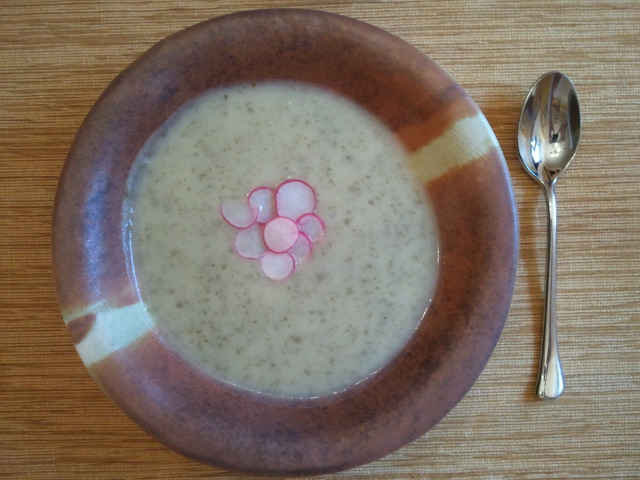I don't often cook with beets because my wife and I tend to find their earthy taste too strong after a few bites. The thing is, we really enjoy those first few bites, so my challenge for the beets (which have been sitting patiently for over a week) was to find a way to serve them where we would not be overpowered by their flavor. I had seen recipes that combined beets with feta, and that seemed like a good start; by using other ingredients with strong flavors, the beets would have more to compete with. Wanting to use another item from the CSA share, I settled on the kale, thinking that their slightly bitter flavor would stack nicely with the beats (earthy and sweet) and feta (salty). Since kale will lose some of its bitterness when cooked, I used cider vinegar to ensure that it retained a unique flavor that would stand on its own. I probably would have left the recipe at that, except as I was pulling the feta out of the fridge, my eye landed on a pack of bacon that had used its siren song to lure me into buying it last time I was at the supermarket. Everything is better with bacon, right? Darn right it is! The olive oil can have a rest, for tonight we cook with bacon drippings!
The final dish was a great success. The combination of the beets with the kale, feta and bacon complimented each other wonderfully. We still could taste that sweet and earthy beet flavor, but it never overpowered the dish. Needless to say, we cleaned our plates!
One side note that you may want to know (and can probably tell from the picture) is that the beets immediately stained the feta red when I tossed everything together. Certainly didn't effect the flavor, but if you are worried about presentation, I suggest sprinkling the feta on top after tossing the rest together.
Share contents used
The final dish was a great success. The combination of the beets with the kale, feta and bacon complimented each other wonderfully. We still could taste that sweet and earthy beet flavor, but it never overpowered the dish. Needless to say, we cleaned our plates!
One side note that you may want to know (and can probably tell from the picture) is that the beets immediately stained the feta red when I tossed everything together. Certainly didn't effect the flavor, but if you are worried about presentation, I suggest sprinkling the feta on top after tossing the rest together.
Share contents used
Beets (from week 7)
Kale
Ingredients
4 medium sized beets
Salt and pepper4 medium sized beets
4 thick-cut bacon slices, diced
1/2 lb kale, washed, stemmed and torn into bite sized pieces
3 tbs water
3 tbs apple cider vinegar
1/2 cup crumbled Feta cheese
Preparation
Heat your oven to 425 degrees. Wash and dry the beets then cut them in half and place cut side down on a sheet pan covered with aluminum foil. Place in the oven and roast until the beets can be easily pierced with a fork, about 45 minutes. When done, set aside to cool.
Cook the bacon in a large skillet until crisp, then remove to a bowl and set aside. Add the kale to the bacon drippings remaining in the pan and stir to coat all the kale with the drippings. Add the water and vinegar, bring to a simmer and then cover the pan and cook until the kale is wilted, about 5 minutes. Uncover and continue cooking until the majority of the liquid has evaporated. Season to taste with salt and pepper.
When the beets have cooled enough to handle, peel them and cut in to half-inch cubes. Toss the beets, kale and bacon together in a bowl. Adjust the seasoning to taste and then sprinkle the crumbled feta on top.












































